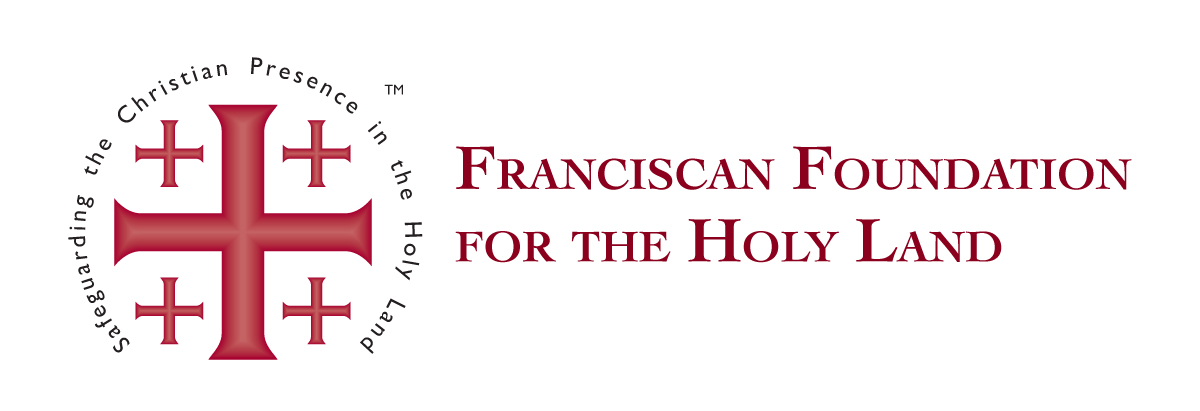 By John F. Fink
By John F. Fink
The first Christian community formed in Jerusalem on what is today known as Mt. Zion. This is not the original Mt. Zion of the Old Testament. For King David, Zion was the fortress he conquered, the place to which he brought the Ark of the Covenant. Today David’s City is located south of the present Old City walls, an area seldom visited by tourists but where there are fascinating excavations—and a magnificent view of the Kidron Valley.
The present Mt. Zion is a hill in the southwestern corner of Jerusalem. Here is where the Last Supper took place, where the apostles hid after Jesus’ crucifixion, and where the Holy Spirit descended on them on Pentecost. It was natural, therefore, that this is where the first Christian community would develop. Here, where the Benedictine Abbey and Church of the Dormition is located, is where Mary’s earthly life ended about the year 50 and at which point she was then assumed into heaven.
The leaders of the church then (St. Paul calls them “pillars” in his Letter to the Galatians) were James, Peter and John. Many argue that this was not James the Apostle (James the Greater) but “James the brother of the Lord” (Gal 1:19). He was known as the Tzaddik, the Righteous Man. The earliest tradition of the Church is that he was the oldest son of Joseph, thus Jesus’ half-brother legally (though not biologically). He had not been one of Jesus’ followers—in fact, there were strained relations between Jesus’ family and his apostles—but was one of those Jesus appeared to after his resurrection (1 Cor 15:7).
James the Tzaddik was known to live an austere and ascetic life. He also considered himself to be a Jew. Although he was a layman, he was scrupulous about following the Jewish laws of ritual purity and was allowed to wear the priestly robes and to pray in the Court of the Priests in the Temple. So far as James was concerned, those who followed Jesus had to fulfill every commandment of the Jewish law, the Torah. In fact, they were to go beyond what was expected. They must live as exemplary Jews. So they could be found worshiping daily in the Temple.
But in about the year 36, some Greek-speaking followers of Christ, members of the Christian community, felt discriminated against. Their leader was Stephen, who was stoned to death after he enraged the members of the Sanhedrin for pointing out that Israel had consistently rejected God’s chosen leaders and that Jews could worship God outside the Temple. The stoning of Stephen began a persecution against the Christians, but apparently not against the original Palestinian followers of Jesus. The Acts of the Apostles says that, as a result of the persecution, all the Christians were scattered throughout Judea and Samaria, “except for apostles” (8:1). However, most of the apostles did eventually leave Jerusalem to take the Good News to other countries.
The Greek-speaking Jewish Christians fled Jerusalem and eventually founded Christian churches in Phoenicia, Cyprus and Antioch. Peter moved to Jaffa, then to Antioch and eventually to Rome. James continued to lead the Church in Jerusalem.
There were signs recorded in the Scriptures that the Holy Spirit wanted the new religion open to non-Jews. Philip baptized an Ethiopian. Peter baptized Cornelius, a Gentile, in Caesarea. And then the church at Antioch was joined by a man who had a different vision than those in the Church in Jerusalem—Paul. He taught that, since the death and resurrection of Jesus, Jew and Gentile alike could enter the New Israel. Through baptism they were incorporated into the Mystical Body of Christ. Therefore, Christians didn’t have to observe the Jewish dietary laws, avoid Gentiles, or practice circumcision.
This was definitely not the religion being taught by James in Jerusalem. He agreed that the Good News should be preached throughout the world, but those who accepted it were expected to become good Jews. The Council of Jerusalem was convened to decide whether Paul or James was right. As described in the 15th chapter of Acts, after much debate, James made a speech in which he ended up saying, “It is my judgment, therefore, that we ought to stop troubling the Gentiles who turn to God, but tell them by letter to avoid pollution from idols, unlawful marriage, the meat of strangled animals, and blood” (15:19-20). This was done.
James continued to lead the Church in Jerusalem. But in the year 62 he was condemned to death by the Jewish high priest for “breaking the law.” He was defended by 80 Pharisees, who protested to Rome on his behalf, but they ended up dying with him.
James’ successor was selected by Jesus’ relatives. He was Simeon, a cousin of Jesus. He led the community to Pella in Transjordan when the Zealots revolted against Rome, because Jesus had predicted the destruction of Jerusalem. That happened in 70. Four years later, the Christians returned to Jerusalem and established a church at the site of the Upper Room on Mt. Zion, which they liked to call the Mother of All Churches.
The Christian Church in Jerusalem continued between 74 and 135, when Hadrian again destroyed the city. During that time there were 14 bishops, all of them with Jewish names. After Hadrian’s conquest of Jerusalem, the Romans changed its name to Aelia Capitolina and all the Jews were expelled, including the Christian Jews. The Christian Church survived, but from that time on, the names of the bishops are Gentile names and the Church in Aelia Capitolina became an all-Gentile Church.
From 135 until Constantine’s time in the fourth century, the Church in Aelia Capitolina was insignificant. The bishop of Caesarea was the chief prelate of Palestine. But the Christians in Aelia Capitolina (Jerusalem) kept the faith alive as they visited the various places considered holy because of their connection with Jesus.
